The Fukuoka Method in the Garden: What are its principles?
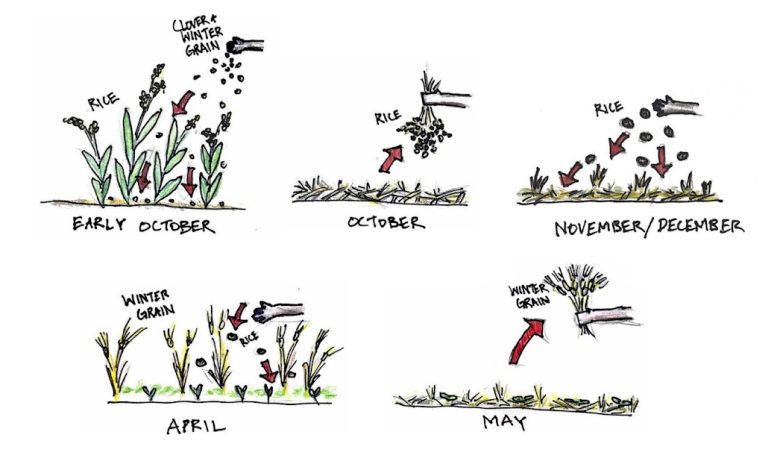
The Fukuoka Method is a cultivation practice developed by Masanobu Fukuoka, a Japanese farmer, biologist and philosopher, whose essential idea was to reproduce natural conditions in cultivation as closely as possible so that the soil would progressively enrich itself and the quality of cultivated food increased without any added effort. Fukuoka called this cultivation method «Natural Agriculture» and due to his philosophy, it is included within Permaculture.Let’s get to know a little more about it.
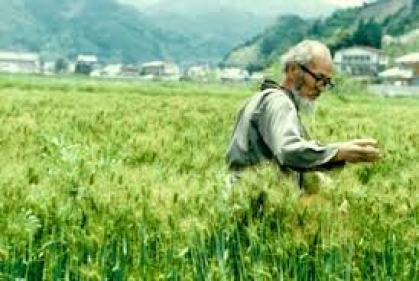
Masanobu Fukukoka
Masanobu Fukuoka was born in 1913 in Iyo City, southeastern Japan. He came from a family of farmers, and began his professional career as a soil scientist, dedicating himself to the study of the soil, and later to the study of plant diseases. It was from a very young age that he began to wonder if the cultivation methods of the time were the most appropriate, and began the search for an ideal cultivation method, aimed at the natural development of plants without unnecessary human intervention.
This made him leave his position as a scientist to return to his family farm and start organic farming systems. After much study he arrived at the method that we know today as the «Fukuoka Method « and to which he dedicated the rest of his life. This proposal for a form of ecological and natural agriculture was presented from his books, The Revolution of a Blade of Straw and The Natural Path of Cultivation.
“There is only one thing that exists: that everything is one. I also discovered that there is nothing that exists in this world, this is the idea that I have followed. I have tried to go more and more into the details of the depths of NOTHING. The only great idea I had at the age of 25 is that it’s all the same.» Fukuoka, M.
The principles of his method are developed from the philosophy of nothing, of NOT-DOING, or intervening only to the extent necessary, and as little as possible, in natural processes, to ensure that the force of Nature enhances the results in optimal conditions. The intuition that much of the work that human beings carry out is unnecessary and destructive, made him put all his efforts into discovering a formula that would remedy both deficiencies, without depleting the Earth’s resources to produce good quality food and abundance.
How to farm following the Fukuoka Method
As we have already said, the essence of the Fukuoka Method is to help achieve the most natural conditions possible, within which the cultivation is something «artificial», and to do it with the minimum intervention on the part of the human being.Its system is based on respecting, and even enhancing, natural cycles, so that they ensure a better quality of plant growth, through simple interventions at the right time.
Principles of the Fukuoka Method
The Fukuoka Method is based on a series of principles, most of which are also used in conventional organic farming:
Do not plow: In order to preserve the structure and fauna of the soil, as well as maintain its composition and humidity in optimal conditions.
Do not use manure or fertilizers: Regenerate the fertility of the land as in any natural system, through the interaction of the biodiversity and minerals of the ecosystem.
Do not remove weeds or use herbicides: Herbicides harm the development of the ecosystem. Fukuoka proposes the control of adventitious vegetation through the interaction between plants, enriching soil biodiversity. Instead of plowing or weeding the field, he covers it with the remains of the plants grown in the previous harvest, creating a natural compost, which preserves moisture and nutrients and prevents the proliferation of unwanted weeds.
Do not use pesticides: they also kill the natural wealth of the soil. The presence of insects can be balanced in a crop, for example with natural enemies.
Do not prune: allowing the plants to follow their natural development.
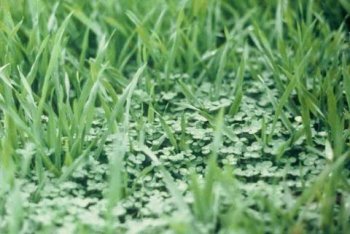
Increased biodiversity of the ecosystem: Avoiding monoculture. Plants live in communities, complement each other symbiotically, compete and help each other. In polyculture, the different species are related creating a natural rotating symbiosis.
Nendo dango: Fukuoka devised a system that makes it possible to replace the plow, as well as the scarecrows and other methods, based on clay balls used for planting. To do this, he introduces seeds into 1.5 cm balls and spreads them around the crop field. These balls dissolve in the rain, allowing
the seed will sprout, while, until then, it is protected by that layer of clay from animals and adverse conditions. The seeds of the desired crop are included in the seed mixture along with those of other plants (mainly white clover). These germinate before the crop, creating a thin layer that will limit the development of weeds. A part of natural fertilizer (manure or others) and cayenne pepper can be included in the clay balls to dissuade the animals that want to feed on them.3
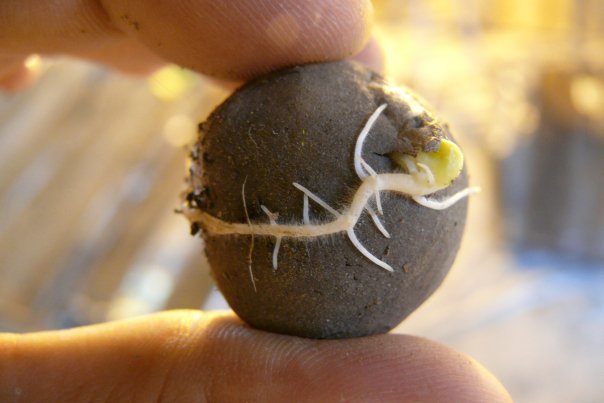
Conclusion of the method
As you can see, the Fukuoka Method is based on starting «giving» and then «receiving» in a natural way, instead of « demanding» the Earth until it is exhausted. It follows a principle of deep respect for the forms of nature and the confidence that nature can provide what is necessary if we know how to find a way to understand its rhythms; however, it is also true that the effectiveness of your system depends on deep knowledge of the interactions in the agroecosystem. Normally it takes time to acquire the technique or until the exhausted land recovers its qualities, but be patient… the sooner you start, the sooner you will gain experience!

![Photo of How to Plant Peanuts in your Garden: [Complete Guide + Images]](https://www.complete-gardening.com/wp-content/uploads/2022/08/how-to-plant-peanuts-in-your-garden-complete-guide-images-390x220.jpg)
![Photo of Salvia Microphylla: [Characteristics, Cultivation, Care and Disadvantages]](https://www.complete-gardening.com/wp-content/uploads/2022/08/salvia-microphylla-characteristics-cultivation-care-and-disadvantages-390x220.jpg)
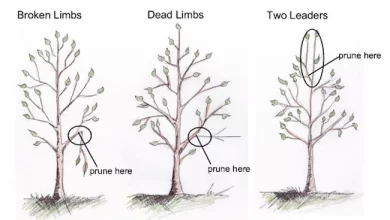
![Photo of Prune Fruit Trees: [Importance, Season, Tools, Considerations and Steps]](https://www.complete-gardening.com/wp-content/uploads/2022/08/prune-fruit-trees-importance-season-tools-considerations-and-steps-390x220.jpg)